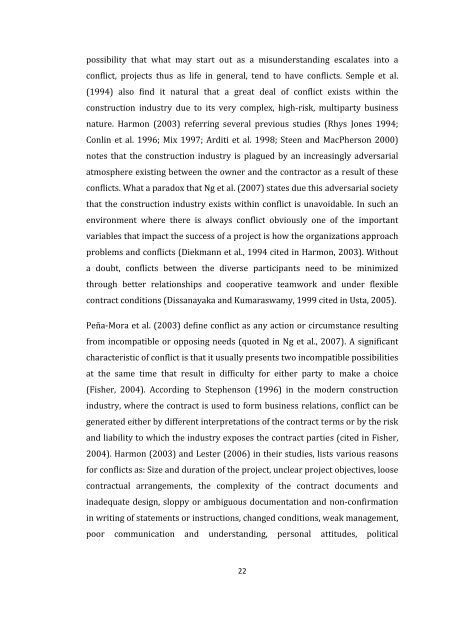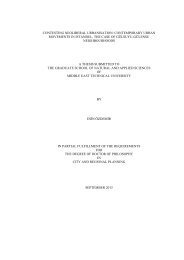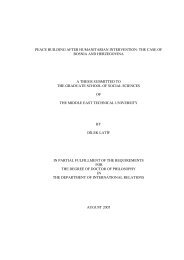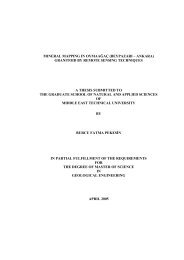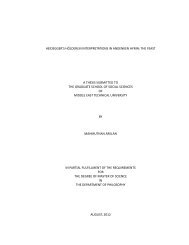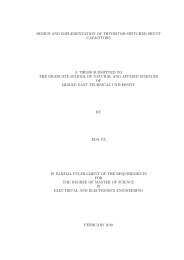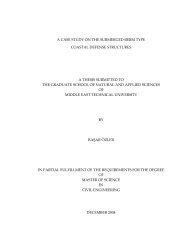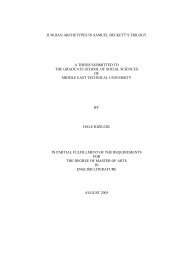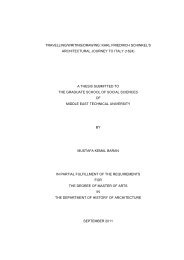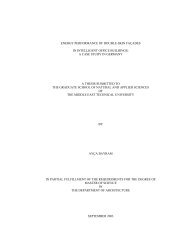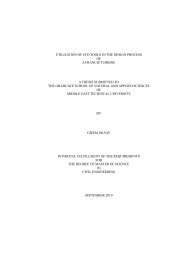View Original - Middle East Technical University
View Original - Middle East Technical University
View Original - Middle East Technical University
Create successful ePaper yourself
Turn your PDF publications into a flip-book with our unique Google optimized e-Paper software.
possibility that what may start out as a misunderstanding escalates into a<br />
conflict, projects thus as life in general, tend to have conflicts. Semple et al.<br />
(1994) also find it natural that a great deal of conflict exists within the<br />
construction industry due to its very complex, high‐risk, multiparty business<br />
nature. Harmon (2003) referring several previous studies (Rhys Jones 1994;<br />
Conlin et al. 1996; Mix 1997; Arditi et al. 1998; Steen and MacPherson 2000)<br />
notes that the construction industry is plagued by an increasingly adversarial<br />
atmosphere existing between the owner and the contractor as a result of these<br />
conflicts. What a paradox that Ng et al. (2007) states due this adversarial society<br />
that the construction industry exists within conflict is unavoidable. In such an<br />
environment where there is always conflict obviously one of the important<br />
variables that impact the success of a project is how the organizations approach<br />
problems and conflicts (Diekmann et al., 1994 cited in Harmon, 2003). Without<br />
a doubt, conflicts between the diverse participants need to be minimized<br />
through better relationships and cooperative teamwork and under flexible<br />
contract conditions (Dissanayaka and Kumaraswamy, 1999 cited in Usta, 2005).<br />
Peña‐Mora et al. (2003) define conflict as any action or circumstance resulting<br />
from incompatible or opposing needs (quoted in Ng et al., 2007). A significant<br />
characteristic of conflict is that it usually presents two incompatible possibilities<br />
at the same time that result in difficulty for either party to make a choice<br />
(Fisher, 2004). According to Stephenson (1996) in the modern construction<br />
industry, where the contract is used to form business relations, conflict can be<br />
generated either by different interpretations of the contract terms or by the risk<br />
and liability to which the industry exposes the contract parties (cited in Fisher,<br />
2004). Harmon (2003) and Lester (2006) in their studies, lists various reasons<br />
for conflicts as: Size and duration of the project, unclear project objectives, loose<br />
contractual arrangements, the complexity of the contract documents and<br />
inadequate design, sloppy or ambiguous documentation and non‐confirmation<br />
in writing of statements or instructions, changed conditions, weak management,<br />
poor communication and understanding, personal attitudes, political<br />
22


